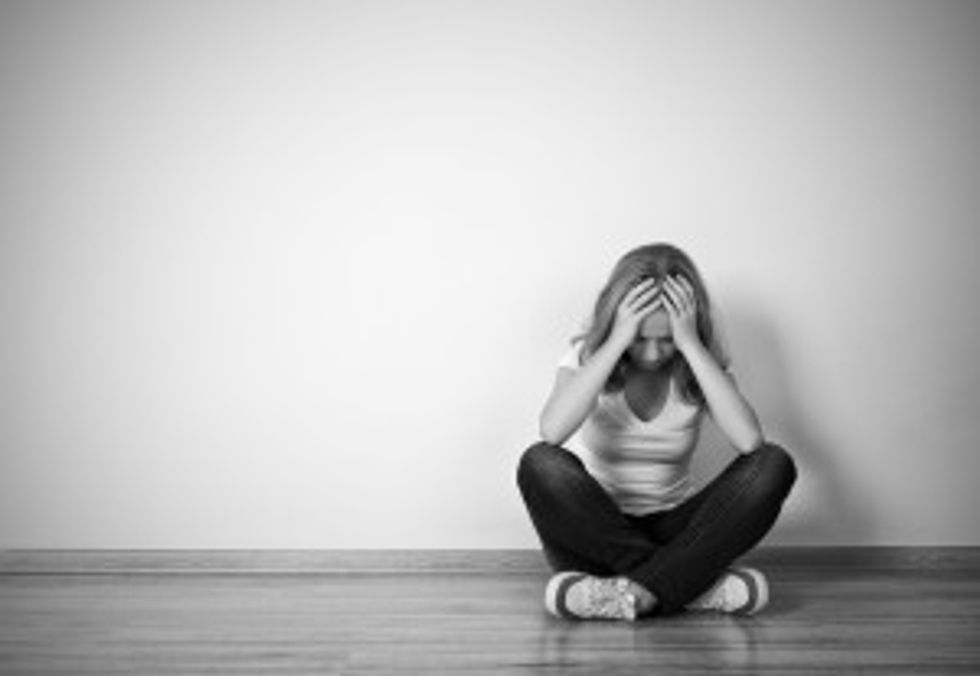If I asked you, "What does a person with Down's syndrome look like?," you would most likely be able to tell me that they have short necks, flat noses, and small eyes that slant upwards. But if I were to ask, "What does a person with depression look like?," what would you answer?
Someone that paints their nails black and wears thick eyeliner? Someone that is pale and sickly, that never smiles, with scars on his or her arms?
There is no answer to that question. There are no distinguishing physical characteristics for people that are sick with depression. So please, I’m kindly asking, open up whatever window you are closest to and throw out whatever stereotypes you might have in mind about the way depressed people look or act.
Let me prove all of your stereotypes wrong. I am a 19-year-old female. I am a little on the short side but other than that, nothing about me would make me stand out in a crowd. I have natural dark hair, wear minimal makeup, and if I do ever paint my nails, they are bright purple or turquoise. I love to run and do yoga. I am a pretty average-looking normal person.
I have friends that I love to hang out with. We go to the beach and the movies just like everyone else. When I am with them I smile and laugh. Just because I have depression does not mean I never have fun. I was in the top 10 percent of my high school graduating class and was voted “most likely to succeed.” I have a 4.0 GPA after my first year in college and joined the sorority Phi Mu. Despite the fact that I have a successful and perfectly normal life, I still battle depression... EVERY. SINGLE. DAY.
There is no “face" of depression. It is not a "one-size-fits-all" kind of illness. It can affect anyone. In reality, depression affects more people than you may realize. According to a nationwide survey conducted by the American College Health Association in 2011, about 30 percent of students reported feeling depressed. Truthfully, I would speculate that this statistic is even higher than what was actually reported. This is an insane number of people.
Picture your 200-student chemistry lecture just before class starts. There are the students in the front diligently reviewing notes. A few in the middle dozing and chewing gum. A majority have their phones out and are scrolling through social media feeds. A group right behind you might be chatting quietly, laughing every so often. The back row is filled with students kicking their feet up on the seats in front of them.
Which 60 people in this group would you identify as depressed? The people with their headphones in? The "nerds" in the front (a.k.a my fave spot to sit)? The person sitting alone? Truly there is no way to know. It could be anyone, even someone from the group of friends that are talking.
The only way to know if people are struggling with depression is to take the time to talk to and get to know them. This current technology-filled era makes taking a second to talk to the person sitting next to you in class tough. Truly, I do not really want to strike up a conversation with my neighbors in class. I would rather take a few notes, pin a few cute pictures on Pinterest, silently laugh at my friends Snapchats, and go back to my dorm when class is over.
But in reality, on days when lifting a pencil feels equivalent to a 50-pound weight, and my eyes are streaked red from crying with despair before class, I would really benefit if a peer would say "hey," and ask what me what I like to do in my free time. On days when depression is exhausting and overpowering I am desperate for someone to acknowledge my presence and ask me how I am doing.
Everyone handles it differently and has different needs to start to feel more normal. Nonetheless, companionship and communication are sure ways to help a fellow student get out of the dumps. It may be tough and even seem a little odd striking up a conversation with the person next to you in class, but who knows it could turn into an awesome friendship, you could even be interrupting someone's depressed thoughts and brighten their day.
It is impossible to know if someone has depression unless they come right out and tell you. There is a chance that beneath a “normal” appearance there is a spirit and soul inside that is hurting and dying. Just because it might not be visible on the outside the person you are bumping elbows with could still be suffering.
If 10 people read this article then statically speaking, three are suffering and in pain from depression. The other seven have the power and obligation to help. Although it might not seem like much, a warm smile and a five-minute conversation can make a lasting impact and even save someone's life. For me, there have been days where the smiles of strangers sitting next to me accompanied by a pleasant "hello, what is your major" conversation has interrupted thoughts of self-doubt and destruction. Talking gave my mind a reprieve from depressed thoughts and encouraged positive thinking about my current interests and future plans. The power of positive thinking can overcome most negative feelings.
I challenge the people that were bold enough to read this article to talk to at least two different people that they sit next to in class every week this fall semester. Develop friendships, laugh, become study buddies, fall in love, save a life, who knows, the possibilities are limitless.




















